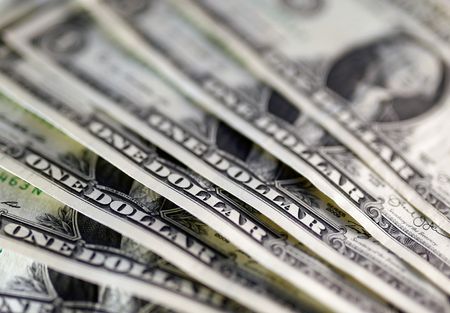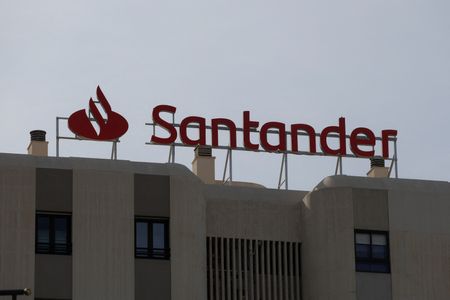By Alun John and Marc Jones
LONDON (Reuters) -Global currency trading volumes soared to a record $9.6 trillion a day in April as Donald Trump’s ‘Liberation Day’ U.S. trade tariff blitz triggered widespread market volatility, the world’s most comprehensive FX market survey showed on Tuesday.
The Bank for International Settlements survey, conducted every three years, also showed that the U.S. dollar remains by far the most traded currency, and that London has consolidated its position as the world’s leading FX hub, even though sterling’s share of the market has taken a tumble.
The headline $9.6 trillion average daily trading for April was a 28% increase from the last time the survey was done in April 2022 – another volatile period as Russia had just launched its full-scale invasion of Ukraine.
DOLLAR DOMINANCE ENDURES AMID VOLATILITY
The BIS, which draws its data from over 50 countries, said this year’s near $10 trillion daily turnover reflected “elevated trading activity amid heightened FX volatility following U.S. tariff announcements in early April 2025”.
Investor uncertainty around U.S. policy has led to speculation about the dollar’s status as the world’s anchor currency.
The survey, however, showed no reduction in willingness to trade the currency, though this was partly due to investors responding to its fall in value.
The BIS said the dollar’s depreciation led asset managers with U.S. exposure to limit further FX losses on their portfolios by selling dollar forward contracts, turnover in which was sharply higher than in 2022.
An FX forward contract locks in an exchange rate for a future date, and is often used to hedge against currency fluctuations.
YUAN’S RISE, STERLING’S FALL
The survey also showed the ongoing rise of China’s yuan, which increased its share of FX trading to 8.5% from 7% in 2022.
The euro’s share, meanwhile, dropped nearly two percentage points to just under 29%, while sterling’s slumped to 10.2% from its average of 13% over the past three surveys.
Questions have resurfaced over the pound’s standing as a reserve currency, especially amid renewed concerns about Britain’s elevated debt levels.
The survey collected data from more than 1,100 banks and dealers in 52 countries.
It found FX sales desks in Britain, the United States, Singapore and Hong Kong combined accounted for 75% of total trading activity, largely in line with recent years.
The BIS also found that over-the-counter trading in interest rate derivatives surged to $7.9 trillion, up 59% since 2022.
Here there were signs of a move away from the dollar. Euro-denominated contracts nearly doubled to $3 trillion to account for 38% of the global total, the highest share, while trading in yen derivatives soared 684% to account for 5.2% of global turnover.
The Bank of Japan, after years of holding rates steady in negative territory, began raising rates in 2024.
(Reporting by Alun John and Marc Jones. Editing by Mark Potter)










